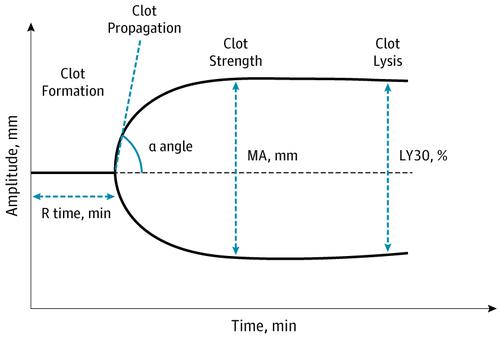JAMA Surgery ( IF 15.7 ) Pub Date : 2019-12-01 , DOI: 10.1001/jamasurg.2019.3136 Madhu Subramanian 1 , Lewis J Kaplan 1, 2 , Jeremy W Cannon 1, 3

|
Thromboelastography (TEG) assesses coagulation throughout all phases of clot formation and is the most commonly used viscoelastic assay in the United States. Thromboelastography was originally developed in 1948 to evaluate inherited bleeding disorders. Thromboelastography has been used in the management of coagulopathy in multiple surgical settings, including the intraoperative phase of liver transplant and the postoperative management of patients after cardiac surgery.1 Thromboelastography analysis is now being more broadly applied to both characterize trauma-induced coagulopathy and to guide resuscitation during massive transfusions. This review explores the principles by which TEG assesses coagulation and examines the use of TEG results for clinical decision-making.
中文翻译:

血栓弹力图引导的创伤患者复苏。
血栓弹力描记术(TEG)评估凝块形成所有阶段的凝结,是美国最常用的粘弹性测定法。血栓弹力描记术最初于1948年开发,用于评估遗传性出血性疾病。血栓弹力图已用于多种外科手术环境中的凝血病治疗,包括肝移植的术中阶段和心脏手术后患者的术后管理。1目前,血栓弹力图分析已被更广泛地用于表征创伤引起的凝血病并指导大规模输血期间的复苏。这篇综述探讨了TEG评估凝血的原理,并检查了TEG结果在临床决策中的用途。











































 京公网安备 11010802027423号
京公网安备 11010802027423号